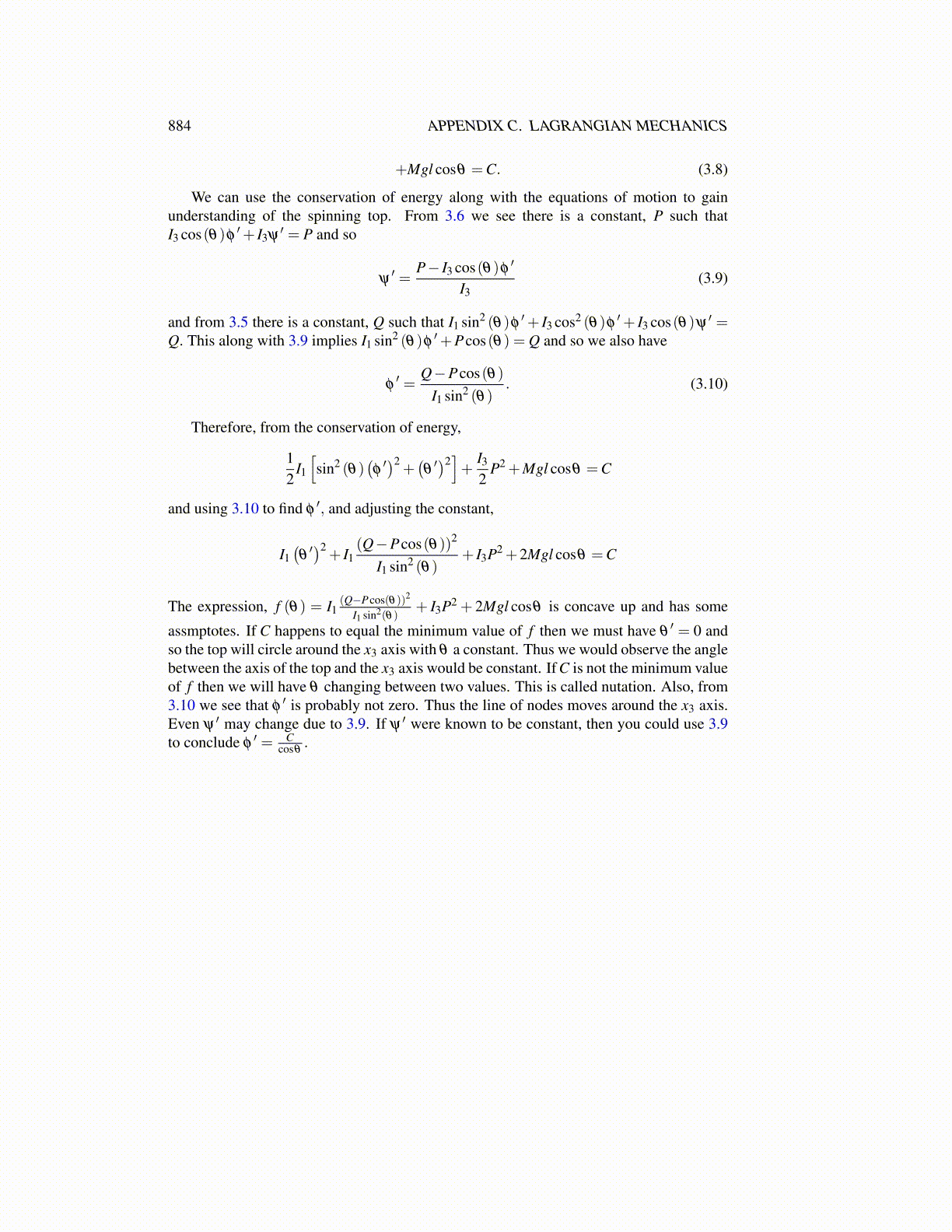
884 APPENDIX C. LAGRANGIAN MECHANICS
+Mgl cosθ =C. (3.8)
We can use the conservation of energy along with the equations of motion to gainunderstanding of the spinning top. From 3.6 we see there is a constant, P such thatI3 cos(θ)φ
′+ I3ψ ′ = P and so
ψ′ =
P− I3 cos(θ)φ′
I3(3.9)
and from 3.5 there is a constant, Q such that I1 sin2 (θ)φ′+ I3 cos2 (θ)φ
′+ I3 cos(θ)ψ ′ =Q. This along with 3.9 implies I1 sin2 (θ)φ
′+Pcos(θ) = Q and so we also have
φ′ =
Q−Pcos(θ)I1 sin2 (θ)
. (3.10)
Therefore, from the conservation of energy,
12
I1
[sin2 (θ)
(φ′)2
+(θ′)2]+
I3
2P2 +Mgl cosθ =C
and using 3.10 to find φ′, and adjusting the constant,
I1(θ′)2
+ I1(Q−Pcos(θ))2
I1 sin2 (θ)+ I3P2 +2Mgl cosθ =C
The expression, f (θ) = I1(Q−Pcos(θ))2
I1 sin2(θ)+ I3P2 + 2Mgl cosθ is concave up and has some
assmptotes. If C happens to equal the minimum value of f then we must have θ′ = 0 and
so the top will circle around the x3 axis with θ a constant. Thus we would observe the anglebetween the axis of the top and the x3 axis would be constant. If C is not the minimum valueof f then we will have θ changing between two values. This is called nutation. Also, from3.10 we see that φ
′ is probably not zero. Thus the line of nodes moves around the x3 axis.Even ψ ′ may change due to 3.9. If ψ ′ were known to be constant, then you could use 3.9to conclude φ
′ = Ccosθ
.